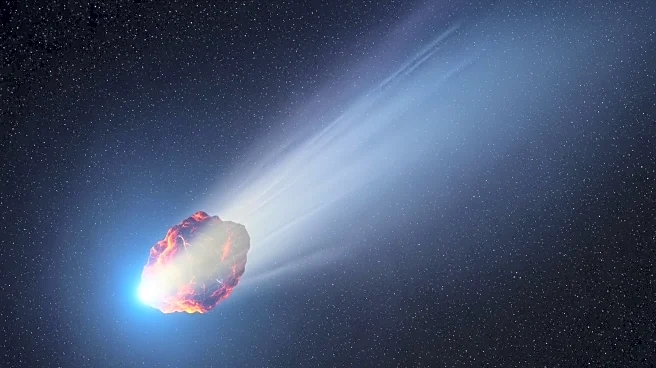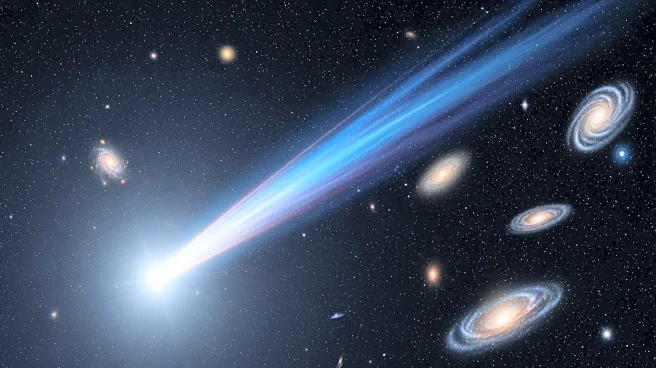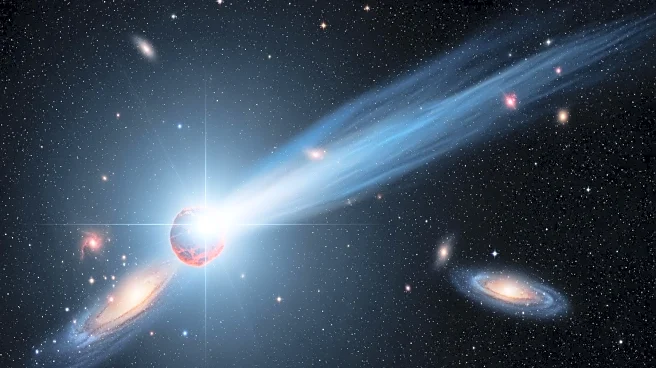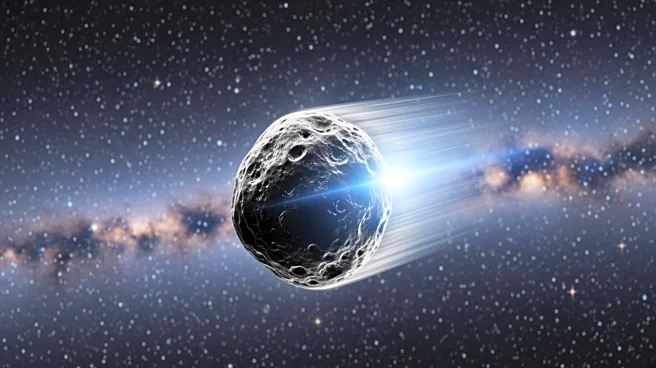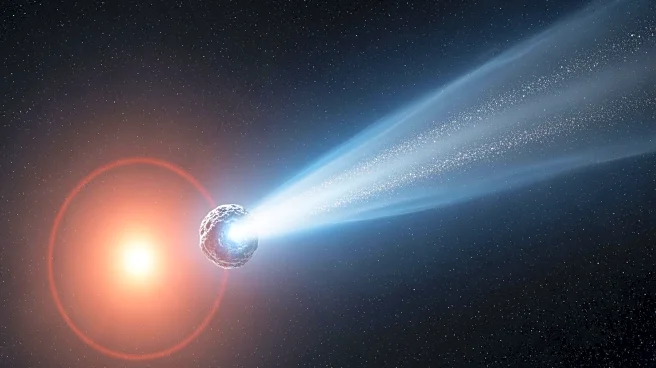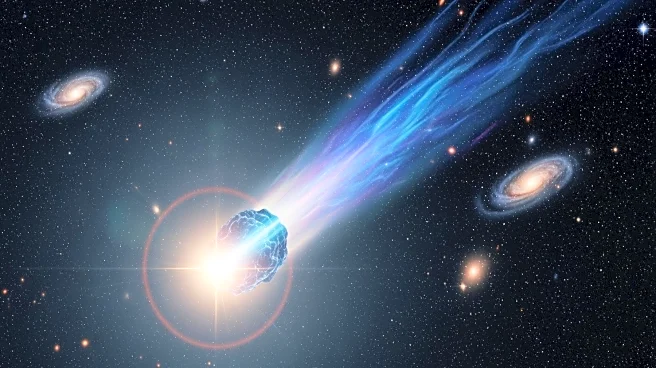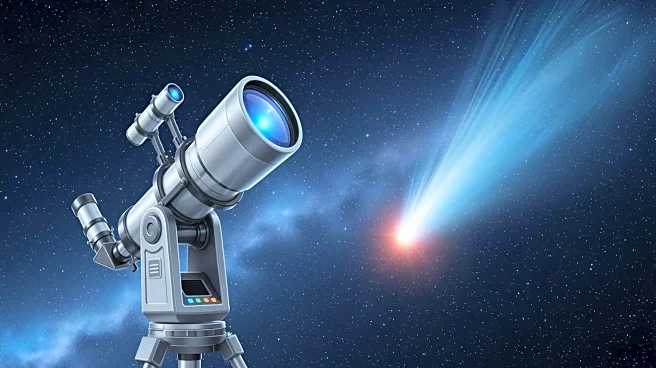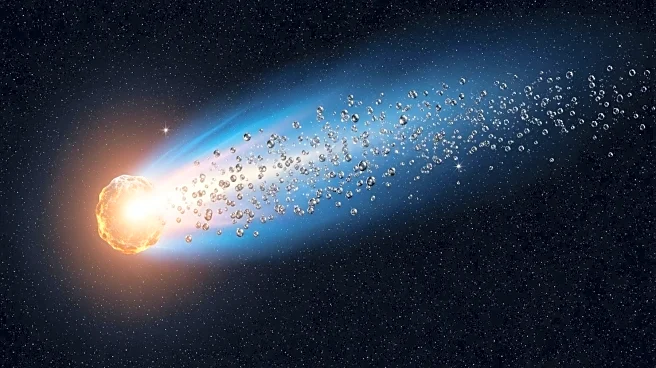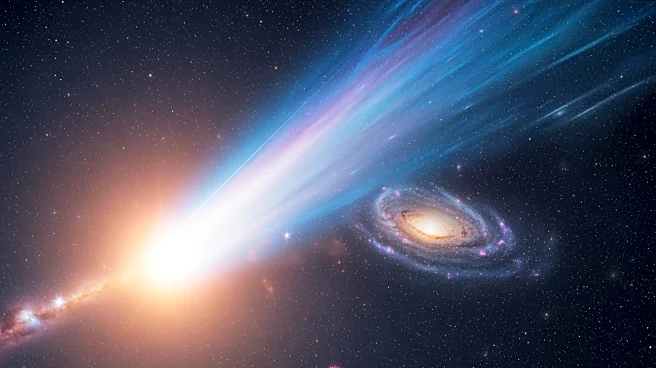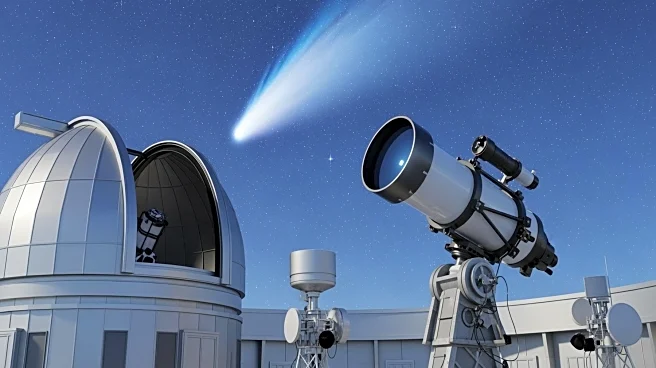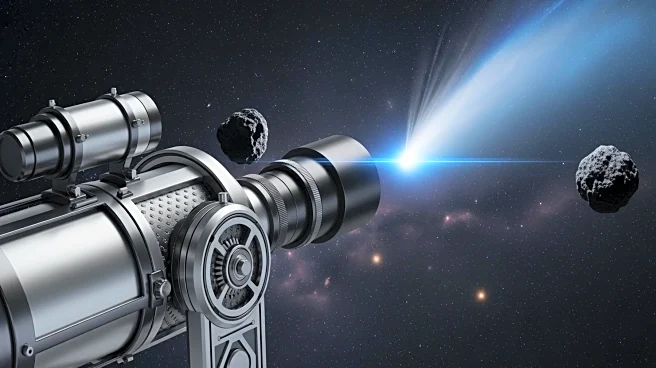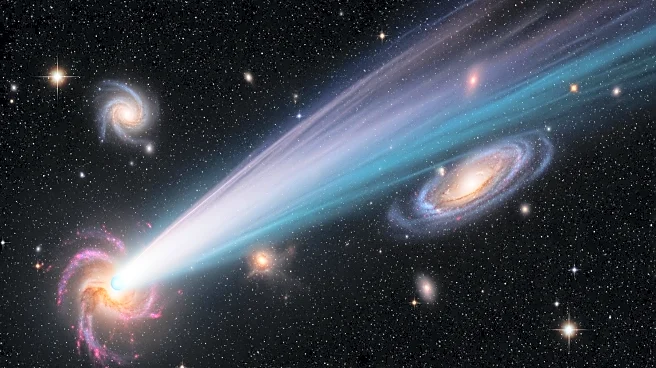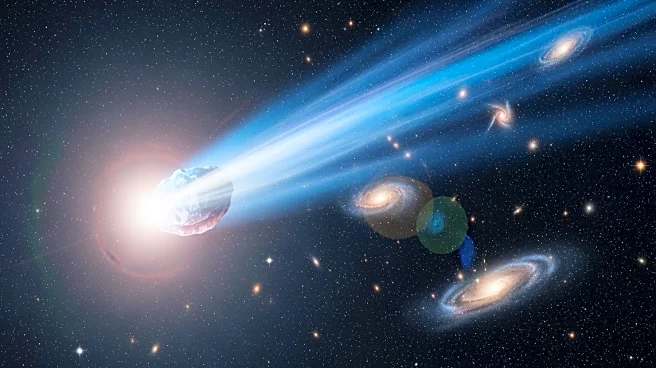What's Happening?
The Hubble Space Telescope is observing the interstellar comet 3I/ATLAS, which is releasing mysterious nickel vapor as it approaches the Sun. This comet, discovered by NASA's ATLAS telescope in Chile on July 1, 2025, is the third known comet from outside
our solar system. It is set to reach its closest point to the Sun on October 29, 2025. The comet's nucleus is estimated to be between 440 meters and 3.5 kilometers in diameter. The emission of nickel vapor, approximately 4 grams per second, is unprecedented and has puzzled scientists, as temperatures at the comet's current distance from the Sun are too cold for metals to vaporize. Observations from the James Webb Space Telescope and NASA's SPHEREx mission are contributing to the study of this phenomenon.
Why It's Important?
The discovery of nickel vapor emission from comet 3I/ATLAS challenges existing scientific understanding of cometary chemistry. This anomaly suggests either unique chemical processes or a composition unlike any known comet in our solar system. The comet's interstellar origin offers a rare opportunity to study materials from another star system, potentially revealing insights into the formation and evolution of distant solar systems. The findings could have significant implications for our understanding of cosmic chemistry and the behavior of interstellar objects.
What's Next?
As the comet approaches its perihelion on October 29, 2025, scientists will continue to monitor its behavior closely. The comet will pass behind the Sun relative to Earth in late October, temporarily hindering ground-based observations. It will reappear in early December 2025, allowing for renewed study. Future observations will focus on whether the nickel emission increases or stabilizes, which could provide further clues about the comet's composition and the processes at play. The scientific community remains eager to uncover the secrets this interstellar visitor holds.
